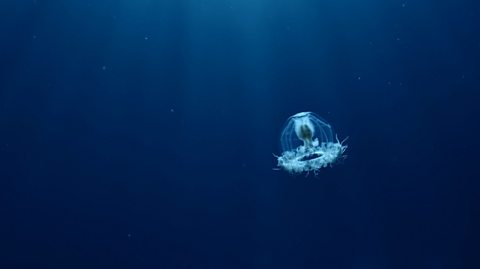From ancient myths to sci-fi literature, our fascination with eternal youth is well-documented.
But there are creatures out there which seem to have cracked the code to stop, or even revert, ageing - and they're very much real. They are, or we think they may be, biologically immortal. This means that, unless killed by a predator, disease or drastic changes to their environments, they can live indefinitely.
Scientists have been trying to figure out the secrets of these mysterious organisms to see if they can help us get to grips with our own ageing process.
Here are three of these amazing creatures.
The planarian worm
The ability of planarian worms to regenerate themselves if split in two has been known since the late 19th Century, but these animals went viral in 2012, when the University of Nottingham published a study on their potential immortality. A type of flatworm, they are found worldwide and there are 12 known species in the UK.
Planarian worms have an unlimited ability to regenerate A cell found in foetuses, embryos and some adult tissues that can give rise to a wide range of other cells..

There are two types of planarian worms: some reproduce sexually and some asexually by splitting in two. The scientists at Nottingham University studied both types and found that the asexual ones may be able to 'rejuvenate' their DNA.
At some points in our lives our DNA, like most other animals', will reach its limit in cell division and our bodies will begin to deteriorate. Planarians, on the other hand, have increased quantities of an enzyme which protects their cells from ageing, and can replenish these stocks when they reproduce, thus leading scientists to believe they may be immortal.
The hydra
This alien-looking creature is a freshwater invertebrate with a tubular body and tentacles around its mouth. It uses these tentacles to sting its prey, which include worms, small crustaceans and other invertebrates. Hydras were among the first organisms examined by Dutch scientist Antonie van Leeuwenhoek, who constructed a microscope with a single spherical lens able to magnify up to √ó275. Not long after, Swiss scientist Abraham Trembley's observations on hydras and their 'regenerative superpowers' marked the beginning of a new era in the field of biology.
Similarly to planarian worms, hydras are also able to regenerate parts of their body. The key to understanding their potential immortality is in their stem cells, which can self-renew indefinitely. In fact, the whole body of a hydra seems to be made of self-renewing stem cells. Scientists who observed groups of hydras for years were not able to detect any signs of ageing in them.

In 2018, researchers from UC Davis put forward the hypothesis that hydras may be immortal thanks to their ability to control something called transposon genes, also known as 'jumping genes'. These are genes that can 'jump' from one part of a The complete set of DNA found in an organism. to another, leading to mutations. When we’re young our bodies are able to control these genes, but as we age we may struggle to keep them in check. Hydras, on the other hand, may be able to repress these genes forever.
Turritophis dohrnii - the immortal jellyfish
The so-called immortal jellyfish (or, to use its scientific name, Turritopsis dohrnii) lives in marine waters. First discovered in the 1880s in the Mediterranean Sea, it can now be found in lots of other locations due to Ballast water is ocean water or freshwater that is loaded onto a ship to improve its stability. discharged by ships. It's teeny and loves eating plankton, fish eggs and small molluscs.

What's amazing about this type of jellyfish is that it can reset its lifecycle. When the jellyfish comes under stress, it transforms into a previous life stage. This is sometimes compared to a frog turning back into a tadpole, or a butterfly into a caterpillar, and is due to a process called transdifferentiation. Transdifferentiation happens when a fully-formed A cell that has become differentiated to carry out a particular function, eg red blood cell. adult cell becomes another type of adult cell - and, as a process, is still somewhat of a mystery to scientists.
And that's not it. When the jellyfish goes back into its previous life stage as a polyp, it also creates more organisms with the same genetic code - so, basically, as it gets younger it also clones itself.
This article was published in June 2022
It's not just The Doctor: Regeneration in real life
As Jodie Whittaker prepares to leave Doctor Who - we take a look at bodily renewal that happens outside of sci-fi

Three amazing medical breakthroughs you may not know about
Researchers select the breakthroughs that make them excited

What happens when you strike a match in space?
The remarkable things that happen to everyday objects when there's no up and down to be found
